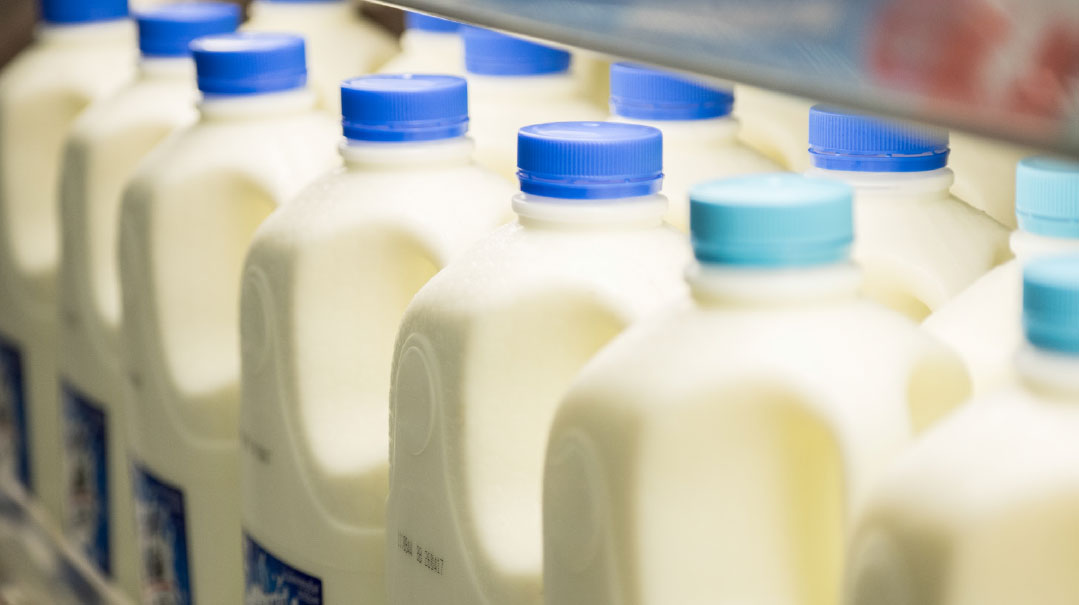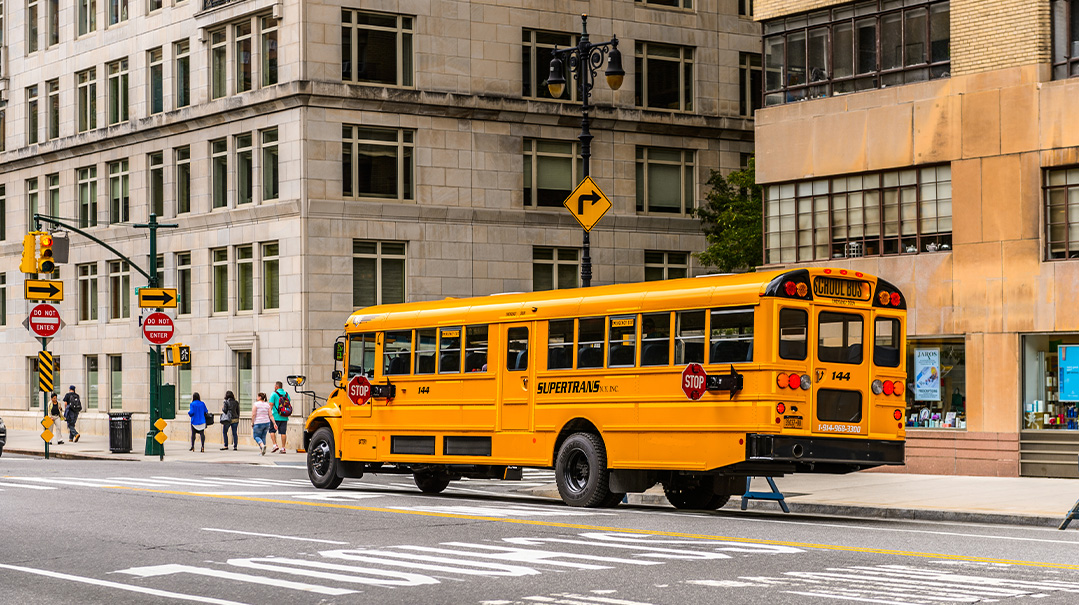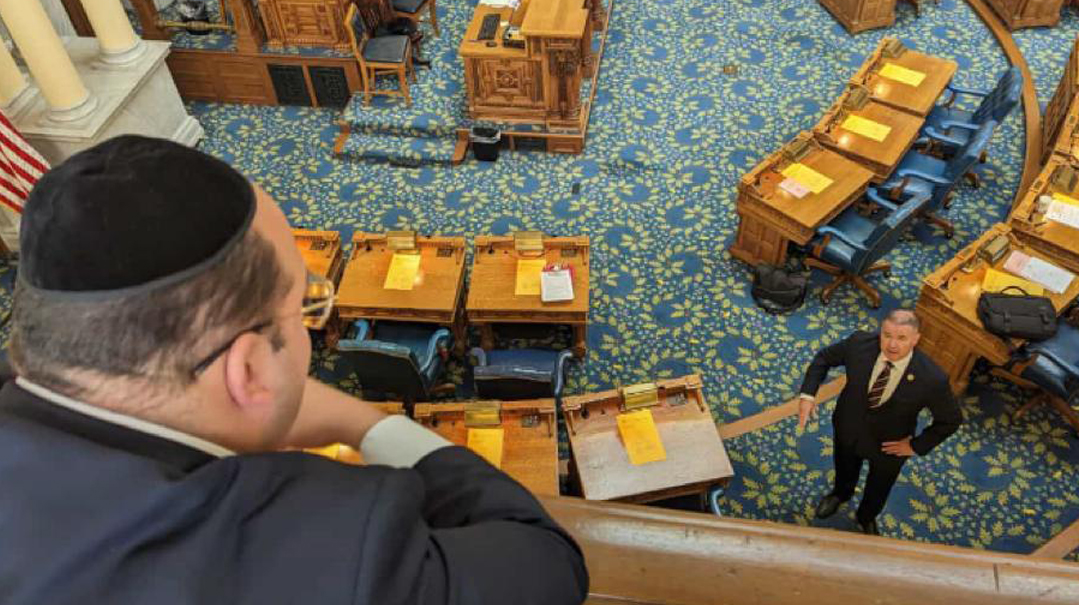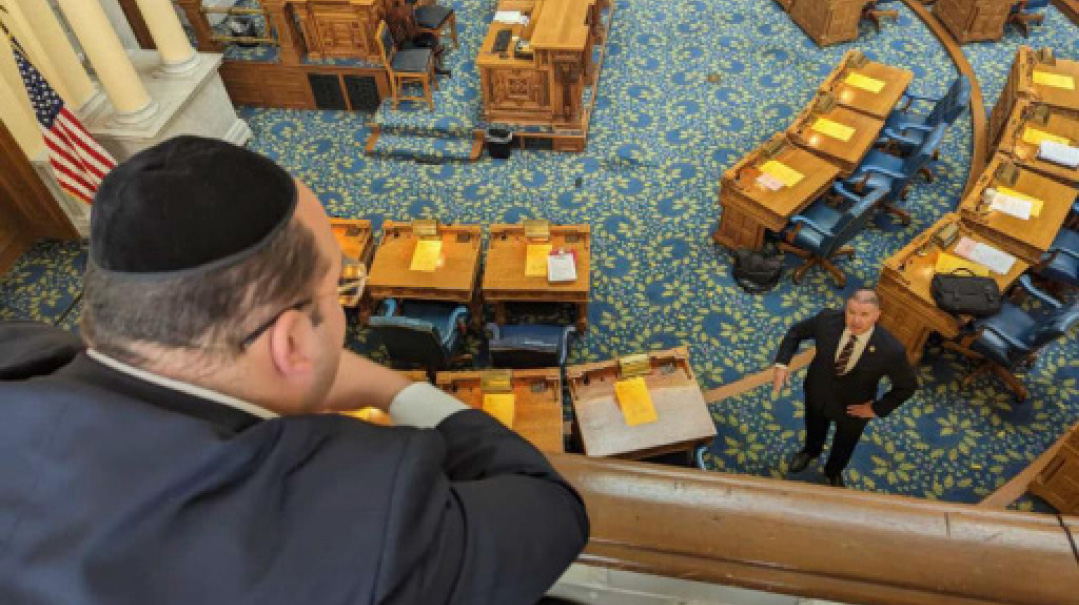Boro Park’s Great Milk Flood

There are now around 400 tons of the creamy gold in the refrigerators and freezers of the mile-and-a-half region, and people are getting desperate to find ways of dealing with it

If milk could talk, Boro Park would be one shrieking mooo. There’s so much milk in our fridges it should be called the Milky Way. Even the neighborhood has a milk mustache. We are one giant “Got Milk?” commercial.
One particularly bizarre sidebar to the COVID pandemic is the food distribution boxes that yeshivos and schools send out, which are taken by virtually every family, rich or poor. One of the staples of these boxes is milk — it’s almost as if the cows were in need of federal benefits, too.
“The cows will have to go on unemployment now,” a friend joked when the federal lunch program that funded the distributions ended several weeks ago. No luck — it was renewed by the Agriculture Department shortly afterward. The cows are back on the national payroll.
When I asked my editor whether to write about it, he responded, “Milk it for all it’s worth.”
And that’s what we’ve been doing with the cows, apparently. There are now around 400 tons of the creamy gold in the refrigerators and freezers of the mile-and-a-half region, and people are getting desperate to find ways of dealing with it.
People have been dropping off milk at shul coffee rooms, sharing their dairy largesse at gathering places for jobseekers, and even following the ultimate Boro Park tradition — leaving it at the curb for those that want it. One joke circulating is of a man who left ten bottles of milk near the curb, with a sign stating that it was hefker. When he returned a half hour later he discovered a hundred bottles of milk next to his sign.
The cause of the milk glut is easily traceable. “It’s the powerful milk lobby,” a yeshivah administrator, who has until recently been distributing the food boxes, tells me.
In 1946, the military persuaded President Harry Truman that healthy kids grow into healthy conscripts and convinced him to make sure that schools fed students better. That led to the creation of the National School Lunch Program. A milk mandate was added in 1970 at the urging of the dairy lobby.
Sender Rapaport, the executive director of the Masbia Soup Kitchen, was one of the first people to recognize when the pandemic hit in early March that yeshivos would have to close and the entire food distribution line would have to be reimagined. He sent emails to the governor’s and mayor’s offices, warning that the Pesach food buyout — one of the biggest food purchases in the Jewish community — was looming on the horizon and that it would likely take place under lockdown. He worked with government officials to ramp up food aid during that period.
Regardless of other needs, milk figures prominently in all government food programs, he notes.
“Whenever Washington talks about giving food to people, the milk lobby is always there,” Rapaport says. “The dairy lobby wants to ensure that their businesses benefit. So they pressure the Department of Agriculture to include vast quantities of milk in its school lunch mandate.”
This means that for every child receiving a school lunch, the school has to show that it purchased a certain amount of milk.
If a mule is a horse created by committee, the school lunch program is a menu created by lobbyists. The potato lobby fought off attempts to classify French fries as a starchy vegetable and the pizza lobby succeeded in reclassifying ketchup as a vegetable. But nowhere is the lobbying more noticeable than with milk.
Every meal — “Breakfast, lunch, and supper,” confirms one Boro Park yeshivah administrator — must include enough milk to give each child the equivalent of at least one eight-ounce cup. In regular times, this is hardly noticed. The kids drink the milk — or don’t — and the rest is repurposed or spilled out.
“Every school that gives out boxes follows the National School Lunch Program guidelines,” the administrator explains. “The lunch program dictates how much milk each child is supposed to get — an eight-ounce cup of milk. So we make our calculations accordingly.”
With the coronavirus, however, the milk has been coming to our doors. The food distribution guidelines also allow for children from different schools, and even adults, to participate in the program.
And it’s simple arithmetic. A typical family of two adults and five children receiving three meals a day adds up to a total of 168 ounces of milk each day, or one-and-a-third gallons. Multiply that by a week and you have over nine gallons, or 36 large bottles of milk in the fridge.
Another reason for the milk glut is the simple fact that schools — as opposed to individual homes — throw out a huge amount of milk. A school would not know what to do with a half-empty bottle left overnight. A home, on the other hand, just puts it away for the next day.
Food distributors have been trying to be creative. They’ve included chocolate milk, and have now even added a new vanilla milk product. And they’ve been successful. Milk sales have jumped 12 percent over the past few months, according to the global marketing research firm, Nielsen. That’s an astounding increase, even compared to the results obtained by the “Got Milk?” commercials, which began in 1993 and ended their run six years ago as one of the most successful programs of all time.
“When things got tough, we saw Americans literally going out and getting milk,” said Yin Woon Rani, chief executive of the Milk Processor Education Program. “And it wasn’t just that they were drinking more of it. They were finding fun and surprising ways to use it.”
I asked around and elicited quite a flavorful response. One woman described how she mixes two-and-a-half cups of sugar to four cups of milk and a tablespoon of baking soda. Just keep mixing and you get dulce de leche. Someone else has started making his own ricotta cheese. “It’s actually really easy,” he told me. “You simmer milk in a pot for a few minutes and once it starts to curdle, you add lemon juice or vinegar. The cheese comes out differently depending on the fat content of the milk used.”
One friend, Avrohom Shlomo Moshel, reminded me of the Gemara in Brachos where a smile is referred to as “showing white teeth to a friend.”
“Now, with everyone wearing masks,” he pointed out, “you can’t see anyone’s teeth so they gave out milk instead.”
(Originally featured in Mishpacha, Issue 827)
Oops! We could not locate your form.








Comments (0)